– contributed by Lizette R. Barton.
Recently the CCHP served as host for the 50th anniversary conference of everyone’s favorite international society for the history of the behavioral and social sciences – Cheiron. It was a pleasure to have so many great historians here in Akron and I figured since we’d have them in town we might as well share what we are doing in regards to archival education and instruction here at the Cummings Center. Thankfully the committee accepted my submission and they put me on the program.
We host visiting classes at the Center from the University of Akron and around the country. And we offer a variety of hands-on archival projects and activities – namely document analysis exercises. So even for a room full of historians I started with the basics.
I annotated the scanned letter below in order to draw attention to some of things we want the students to notice and I waxed poetic about just how much we can get from a single document.

Abraham Maslow papers, box M4495, folder 3
Just look at this gem of a letter between Ross and Abe! It’s got all my document analysis favorites – it’s missing last names, it provides societal context (The Goodyear Rubber strikes), it references someone who eventually changed their name (Krechevsky aka David Krech), it mentions the very beginnings of an unnamed psychological society (SPSSI), and it provides information on what both the receiver and writer of the letter were working on at the time (anthropology, fascist attitudes, and social psychology).
Next up – analyzing a photograph.
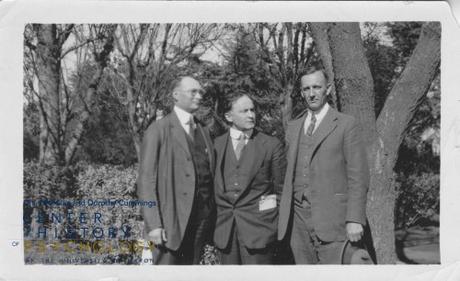
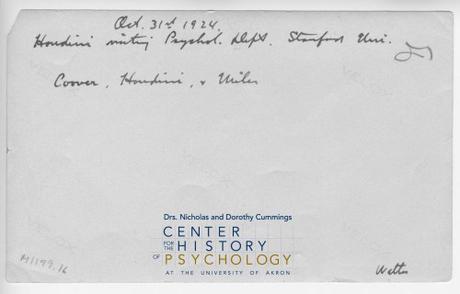
Walter and Catharine Cox Miles papers, box V43, folder “Yale”
We discussed challenges associated with analyzing photographs. And we discussed issues specific to this image including how to interpret handwriting and what had been written by the owner of the image (names and dates) and what had been added later by other parties (M1199.16 is the box number from which his photograph came).
After all this talk it was time to let the Cheironians do some analyzing of their own so I reused a project we created for a UA sociology professor and her Social Inequalities class.
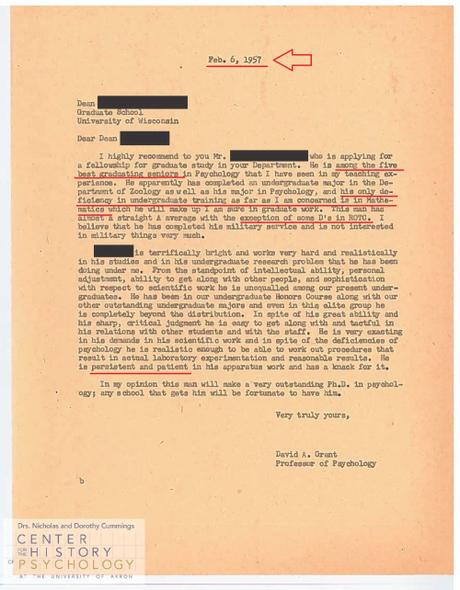
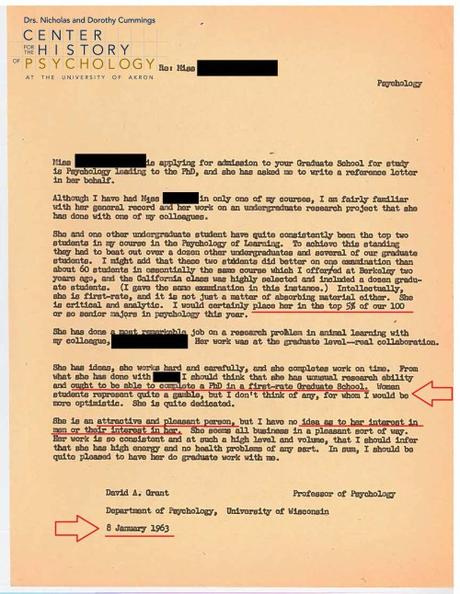
David Grant papers, boxes M1023 and M1024
I distributed redacted, but unannotated copies of each of these two letters to the Cheironians and asked them to work in groups to complete a document analysis sheet. The analysis sheet first asks participants to list adjectives used to describe each candidate followed by questions including, “What do you notice about the similarities and differences in the language used to describe each candidate?”; “What might account for the differences?”‘ and “What if this same language was used in reference letters in 2018?”
I gave the groups about 15 minutes or so to work and and just like when we worked with the UA students on this project we had a great discussion! The historians had all kinds of theories. It was excellent!
For our last group project I distributed copies of Operations of the Government Hospital for the Insane (1857) – the second annual report of the first government asylum in the United States that would become known as St. Elizabeth’s – and another analysis sheet. This was a riff on a project we created for another UA sociology professor’s Sociology of Health and Illness class.
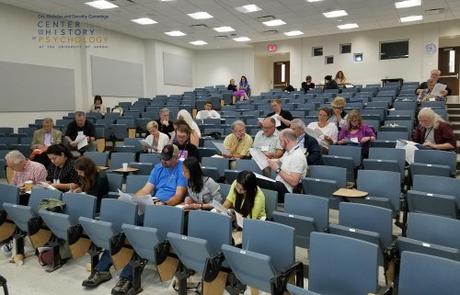
Look at all these Cheironians doing history! So awesome!
The analysis sheet asked participants to locate illnesses and conditions for which patients were hospitalized. It asked participants to determine if the language describing any of the illnesses had changed over time and how similar illnesses or conditions would be described and treated today. The sheet also asked participants to look for costs associated with the running of the hospital and statistics regarding patients. And finally, “What did you find out from this document about mental health and mental health treatments you had not already known?”
Whew! What a discussion! It was excellent.
I think the coolest part was that so many people asked poignant questions regarding the history of mental health care in American and state hospitals. I took that as an opportunity to point out that while I didn’t know the answers to the majority of their question these are exactly the kinds of questions a project like this should evoke and it’s why we often let visiting instructors lead the discussion. We at the Cummings Center are experts in access but the instructors we work with are the content experts. That’s why we make such a great team!
The best part of this activity was that I was able to share with the Cheironians they could do this one with their own students since we are actively working on upload our entire collection of Cushing Memorial Library Collection of Asylum Reports to our digital repository in full-text as downloadable PDFs. Woohoo!
Cheiron was such a great time and I was so pleased to be able to share the educational work we do at the Cummings Center with such an engaged and supportive group. If you’re interested in learning more about the projects discussed here and/or working together to create an archival project please contact us at [email protected].
